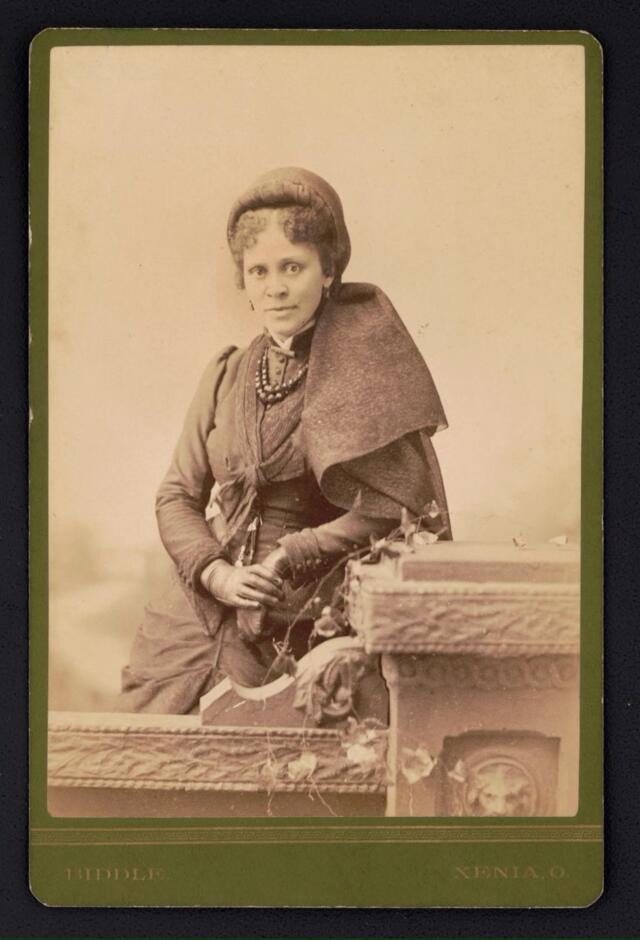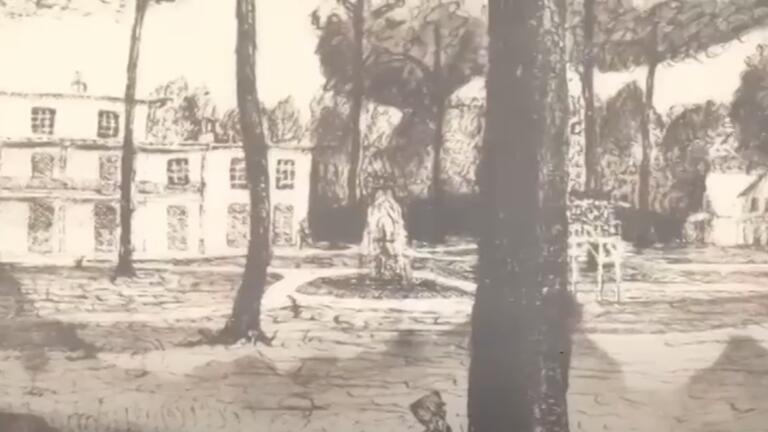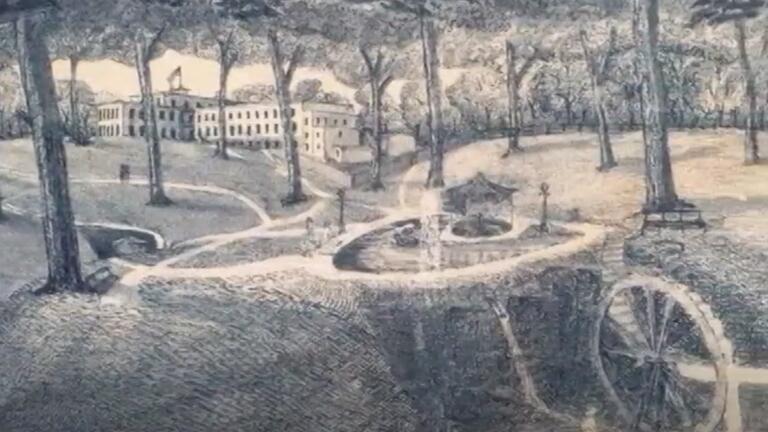
‘Can I Get a Witness’: Reflections of a 350-year-old oak tree on the Central State University grounds

Above: An aerial rendering of the Central State University (then Wilberforce University) campus showing Tawawa Woods. Article photos courtesy of Central State University historical video series unless noted otherwise.
The world was a different place when I germinated out of my acorn seed as a small sapling along with other trees in the Tawawa Woods around 1674, long before Central State University was founded here. Though time has since worn its grooves into my bark, I remember it all. Back then, the land that would become Wilberforce, Ohio, was a dense forest, home to the Shawnee, Hopewell, and Adena peoples. They lived harmoniously with nature, treating the land as an extension of themselves.
In my earliest years (1780s), I also witnessed European colonists moving westward from the original 13 colonies, subjugating the Shawnee and slowly settling in this land. Around 1840, I, along with my brothers and sisters in this Wilberforce forest, would become a vital stop on the Underground Railroad. Here, brave people risked their lives to help enslaved individuals escape to freedom before the Civil War.
The war, a brutal four-year conflict from 1861 to 1865, ended with the Confederacy's defeat and the abolition of slavery. This watershed moment reshaped the nation’s ideals of liberty and equality. The Emancipation Proclamation in 1863 marked a turning point, and with the Union's victory, the 13th Amendment in 1865 officially abolished slavery in the United States.
In the aftermath, newly freed African Americans found both opportunity and hardship as they began reclaiming their lives, families, and futures. Emancipation swept through this land like a storm, leaving scars but also planting seeds of freedom.
In the years that followed, young Black Americans sought learning and empowerment, inspiring the rise of HBCUs (Historically Black Colleges and Universities) — beacons of possibility — across the nation.
Wilberforce University, founded by the African Methodist Episcopal Church on Aug. 30, 1856, was born of that same resolve to educate and uplift as the oldest private, historically Black university in the United States.
Later, in 1887, when I was already 137 years old, the Combined Normal and Industrial Department at Wilberforce, the predecessor of Central State University, would emerge from this legacy, devoted to empowering Black students through higher education.

Brigadier Gen. Charles Young: A legacy of resilience and leadership
Looking back, I recall the many brave Americans who walked these sacred grounds. One such hero was Charles Young. Born in 1864 to formerly enslaved parents, Young’s life exemplified resilience. After his father escaped slavery to join the Union Army, the family moved to Ohio. Young excelled academically, later becoming only the third Black graduate of West Point.
He served with distinction in the Buffalo Soldiers and made history as the first Black superintendent of a national park. At Wilberforce, he expanded the Military Sciences program and founded the University’s first marching band.
In 1917, Young rode 500 miles to prove his fitness for duty after a medical retirement, underscoring his lifelong dedication. His legacy endures along the 170-mile Brigadier General Charles Young Memorial Historical Corridor.
A continuing fight for justice
With the abolition of slavery came Reconstruction, but true freedom and equality remained elusive. I learned from Central State students from the South that Jim Crow laws entrenched racial discrimination, permeating education, public services, and all aspects of life. Black communities, however, remained resilient, creating schools, businesses, and institutions that defied these oppressive restrictions.
The Civil Rights Movement of the 1950s and 1960s became a pivotal era. Fueled by landmark court cases like Brown v. Board of Education in 1954 and legislation, such as the Civil Rights Act of 1964 and the Voting Rights Act of 1965, the movement dismantled segregation and redefined American society.
Central State University was active during this period, with students and faculty participating in protests, sit-ins, and marches. Dr. Martin Luther King Jr.’s visit to the campus further inspired their quest for justice, igniting hearts with hope. By the end of the decade, barriers began to fall, paving the way for new generations of Black leaders, thinkers, and activists. I felt it all as they dreamed of a better world beneath my branches, whispering of unity and justice.
Students grow and lead as changemakers
Each fall, I saw new students stroll under my branches, carrying dreams of equity and change. Beneath my canopy, students studied, protested, and celebrated, speaking of justice and civil rights. I witnessed their resilience through relentless obstacles.

When wars echoed across oceans and turmoil gripped the nation, students continued along these paths, finding strength and unity in their purpose. Among them was Hallie Quinn Brown, an early trailblazer for equal rights, education, and women’s suffrage. Later, Central State honored her with the Hallie Q. Brown Memorial Library.
Students came and went, leaving pieces of their stories in my roots, sharing laughter and struggle, learning in my shade. Even the devastating tornado of 1974 could not bring me down, despite destroying an estimated 80% of the campus. As technology reshaped the world and the nation evolved, Central State stood strong, resilient, just like me.
In 2024, the wrath of Hurricane Helene ended my long life, its fierce winds claiming my branches and ending my long watch over the campus. Yet my spirit remains, rooted in the memories of those who grew here, like Elizabeth Eckford, one of the Little Rock Nine who faced unimaginable adversity to integrate America’s schools. I know the CSU campus will continue to be a shining light for future generations.
Though my time here has ended, Central State’s future as a Destination Learning Environment is bright, deepened by the footsteps of those who came before. New generations will continue the journey, reaching new heights, carving their own place in history. As it enters its 138th year, Central State will grow, thrive, and blossom for centuries to come.
As I’ve heard generations of Centralians and Marauders proclaim: For God, For Central, For State!





